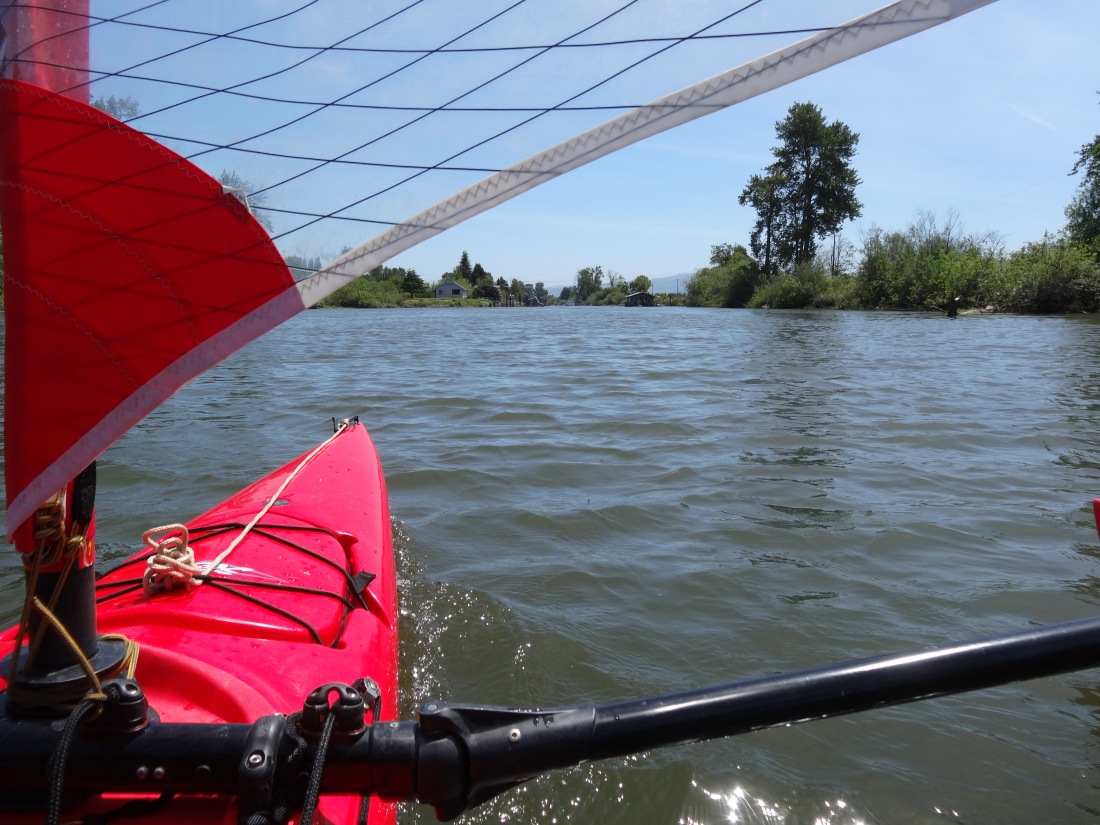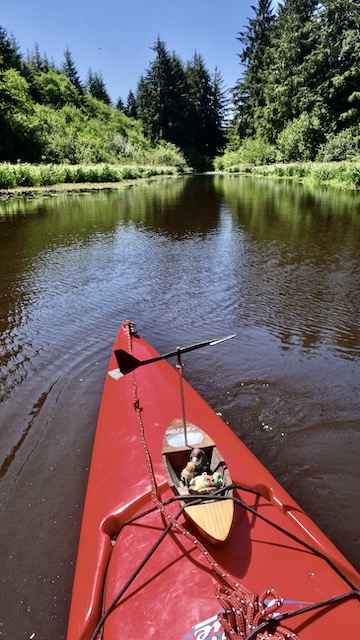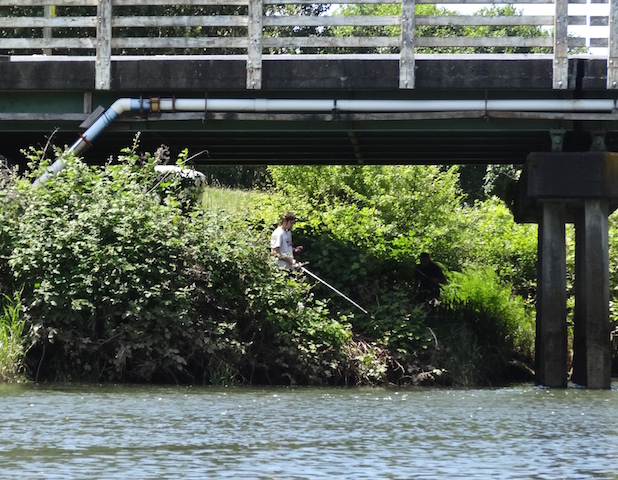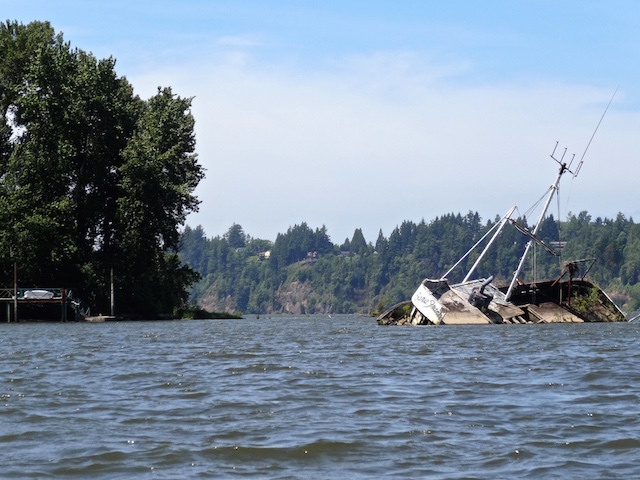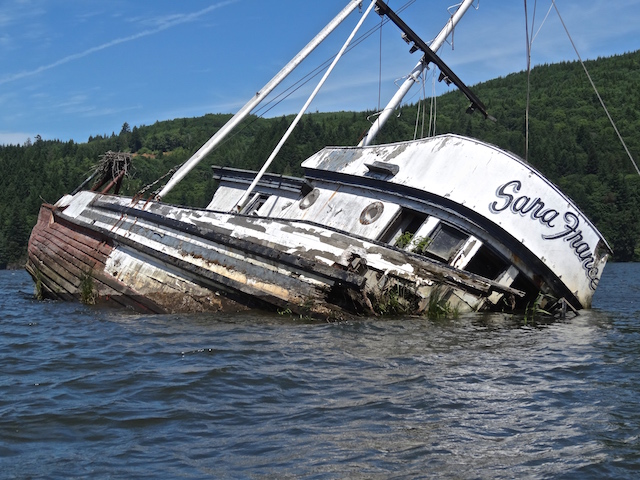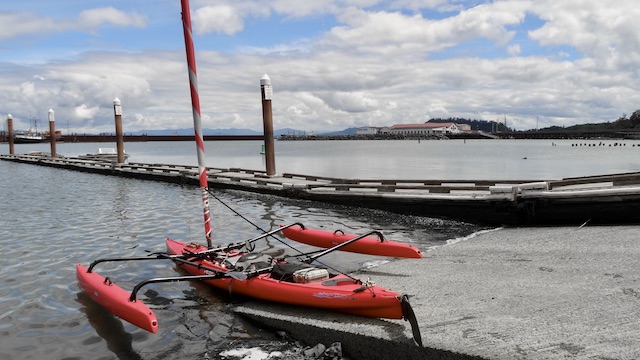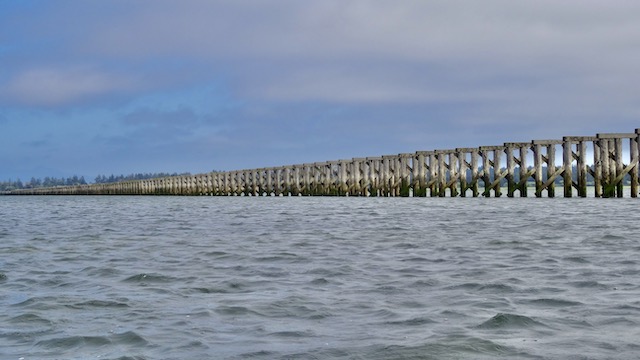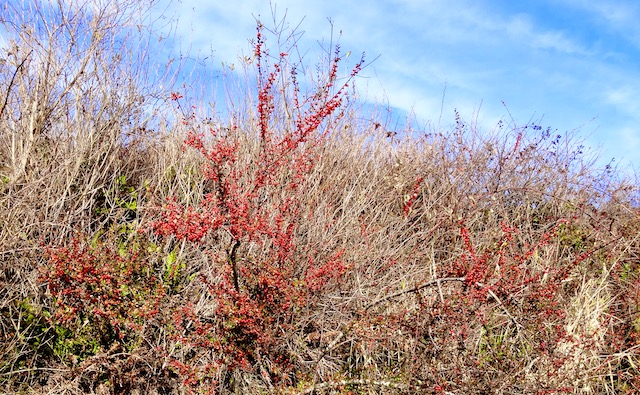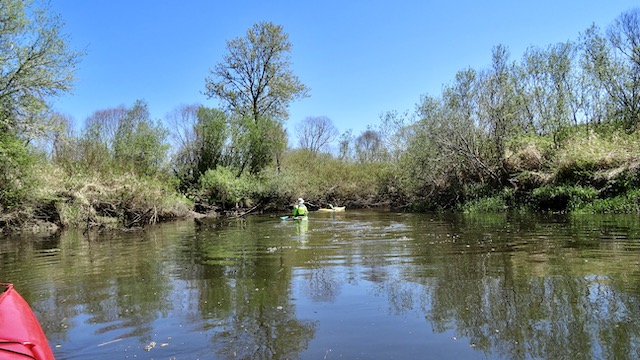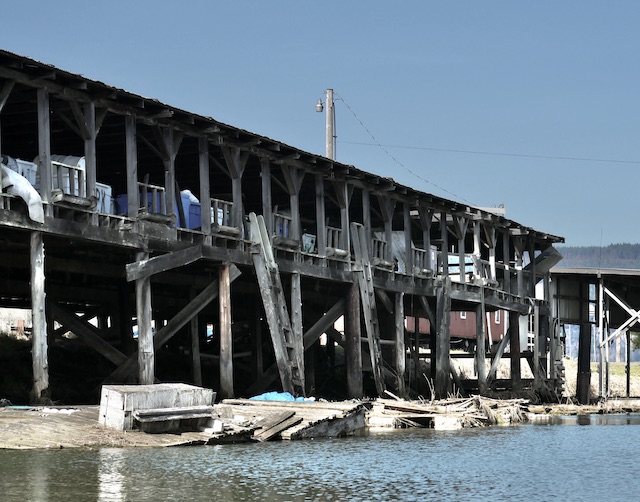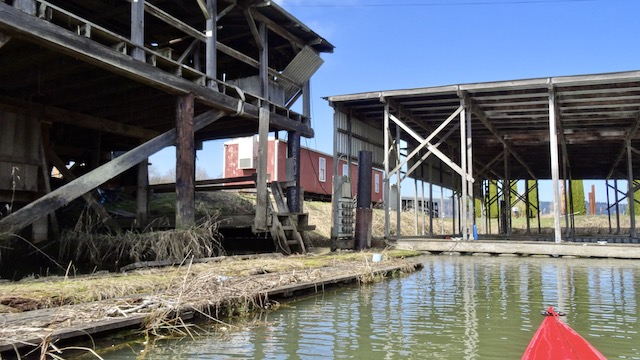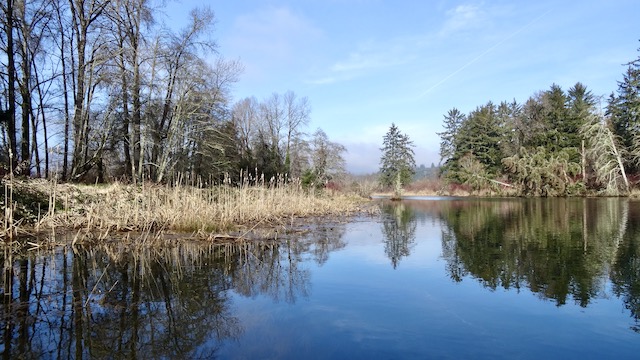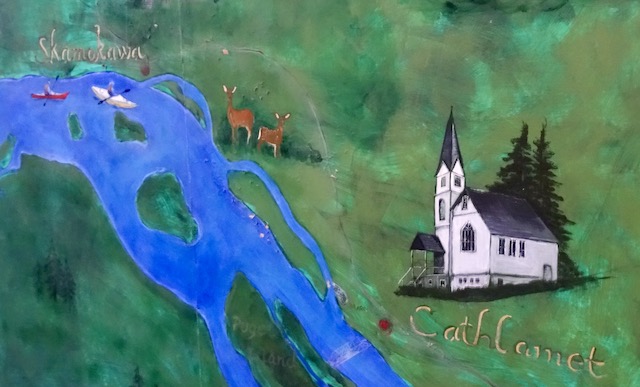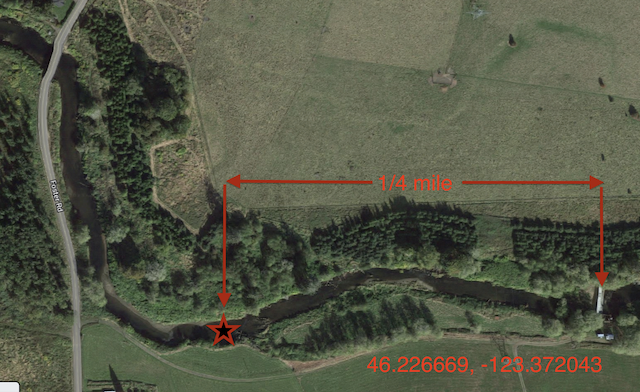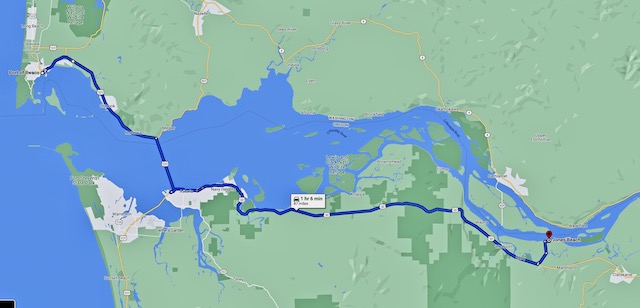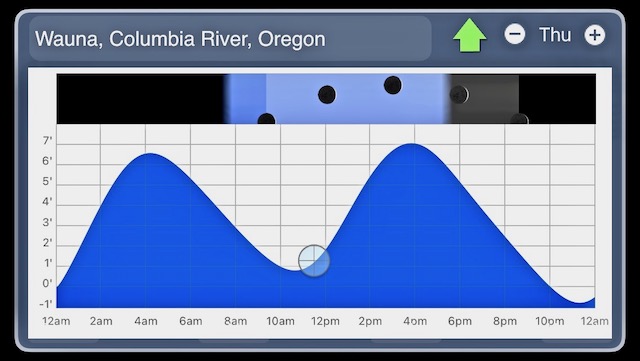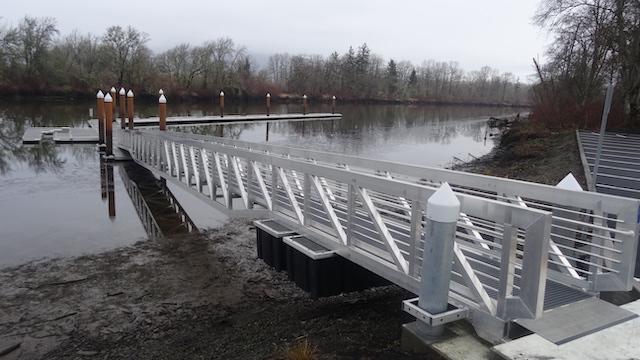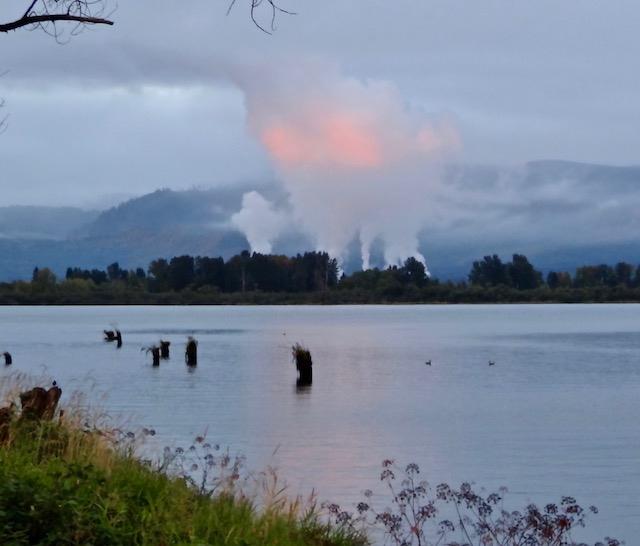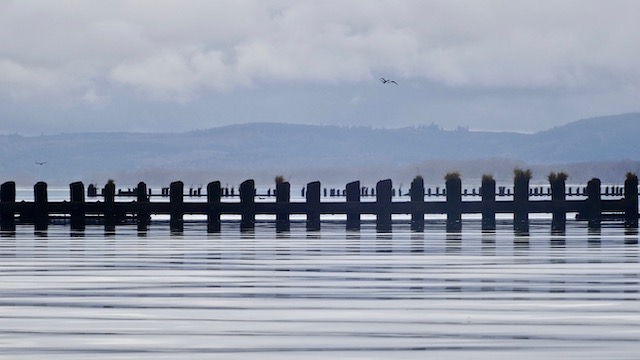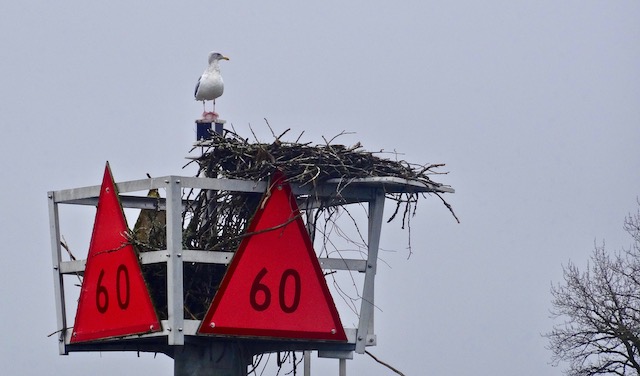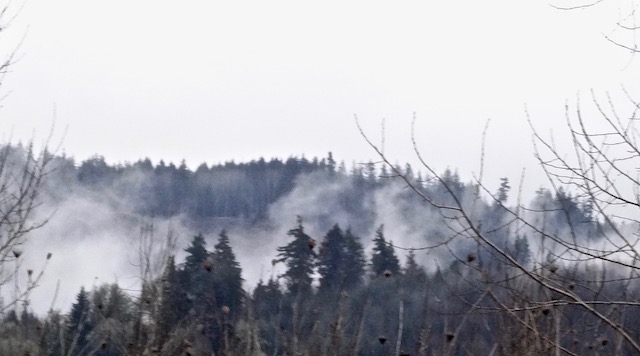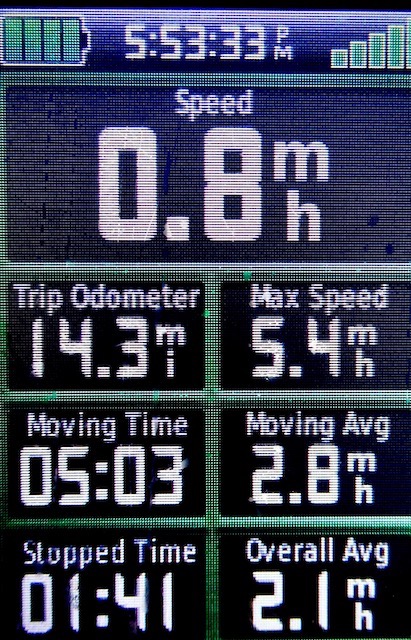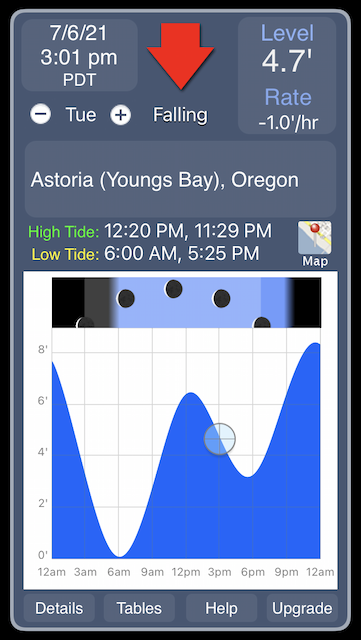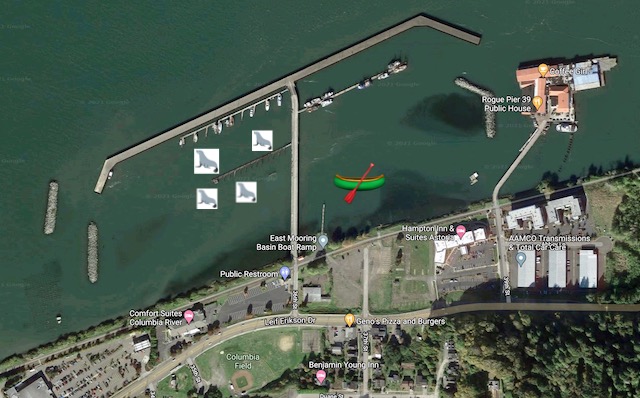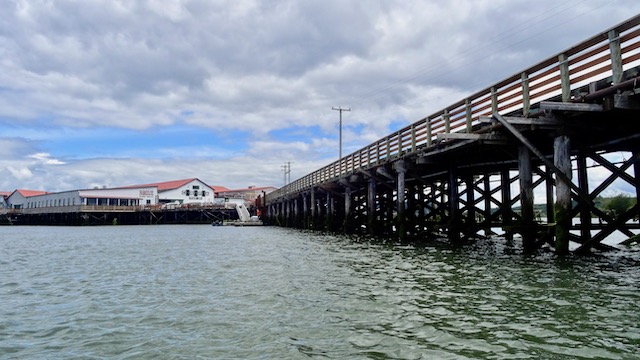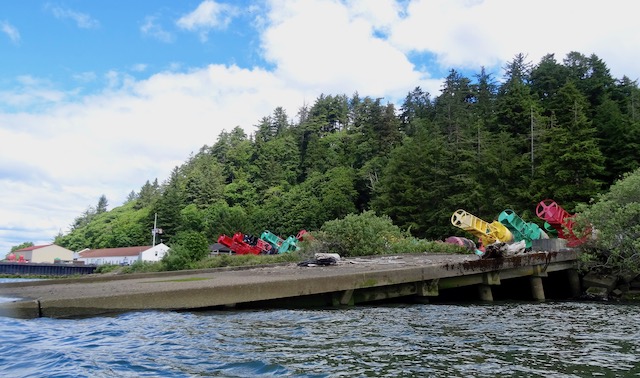A Practice Landing
March 16, 2024:
Recently I saw that a group of kayakers had spent a day paddling from Westport Oregon down the Columbia River taking out just east of Astoria. It’s a quiet trip through protected lands that are marked green on the Forest Service map below. Their excellently written trip report with the Mountaineers is here.

I commented on their Facebook post how much I appreciated their pictures and map and it inspired me to study their route. Where they had paddled through Russian Island, I could see the group of eight floating homes they had seen tucked into a channel.
Last summer I was told by a fellow paddler that a lot of property rights in this area are grandfathered in. I confirmed that by looking at the 2010 USFWS Conservation Plan for this area available here. They list thirty-two floating recreational cabins (FRCs), commonly termed “duck hunting shacks”, within the L&C National Wildlife Refuge. Some were built in the early 1900’s, others as recent as the 1980’s. As per a proposed 2003 ordinance, any built before 2000 may legally remain if they meet requirements (waste disposal, appropriate use, modification or construction etc.), but no new ones can be built.
Today I would go see those floating homes, because they would be different from the typical beauty and wildlife I would normally see.
Svensen has several floating homes that are always interesting, and I have paddled out from Aldrich Point further upstream to check out other floating homes on Horseshoe and Woody Islands as well as written about here and here.
I have no history of Russian Island to share, as my favorite research site seems to have vanished. I searched my books that mention this area but came up with little. I am poorly qualified to be any sort of expert here. This area has a rich history and is still being used and maintained by so many.
After packing up and double checking, I found that the high tide that I thought I had today was instead for a previous day. Today would be safe and have more potential adventures then revisiting a nearby lake. It would just be shallow. The weather was predicted to be clear with 8-15 mph SSE winds. The kayak would be set up Polynesian style which is fun, stable and fits in with a book I am currently reading that partly covers the Polynesian’s remarkable seafaring prowess (the first chapters of Guns, Germs, and Steel by Jared Diamond).

The John Day boat ramp isn’t the closest to Russian Island, but it has the best ramp in the area for my heavy kayak.

Make sure you bring a credit card that works. A truck parked near the payment station was hoping for leniency with a note explaining how it “Won’t read card I’m getting a new one”.


I assembled off to the side on the grass. Little boats blocking the ramps longer than necessary irritate those with trailered boats. They paid their additional license fees and may express their anxiety to get a move on.

I spotted three different water birds before reaching the Columbia. First, an American Coot checked me out.

Off to the left was a Great Blue Heron and a Bufflehead was further ahead as I approached the abandoned railroad swing bridge.


Following the South Channel upriver, I noticed the trees above the railroad line are still awaiting spring.

I checked my old automotive Garmin as I carry redundant GPS & camera gear. It suggested I should turn right with my car and continue on US 30 onto Svensen Island, then turn left to Russian Island.


The weather was beautiful today.

Just shy of the Twilight Eagle Sanctuary I landed and took the time to explore this stream coming out from under the trestle. The tide had just turned and was rising from today’s low of +0.5′.

Sometimes these streams go inland quite a way. The channels further east in the sanctuary are fun to paddle in too, but not today. A post about a previous trip into the sanctuary can be found here.

From atop the trestle, I found a small sheltered lake to explore later on a higher tide.

The intact railroad continues eastward and could be used for rail bicycles with a bit of clearing. The railroads have the best and most level right-of-ways. In the early 1980’s while I worked at a bicycle shop in Coeur d’Alene Idaho, a local inventor named Dick Smart patented and developed a street bicycle that could also be ridden on railroad tracks. I helped assemble and figure out what parts were required for his early models. Once I was invited for a ride east of town. I’ll never forget the thrill of hesitantly pedaling over a banked trestle high over a river supported by only two bicycle tires, a small guide in the front, an adjustable outrigger, and no way to put my foot down. He latter sold several to London for their use to inspect tracks. An illustrated article about it is here.

A picture from Dick Smart’s book: Biking on Rusty Ribbons of Steel shows our first batch. I’m wearing the hat at the end as we were recreating a similar picture of railroad bikes from the 1890’s.

Here is Settler Point just outside the Svensen Slough. The stream had been about a half hour diversion as the tide rose. It’s out to Russian Island now. The tide had risen to +0.9.

The pin is from my camera later. I am about a quarter mile away from the island and just bumped the bottom. I watched ahead for vegetation following my Garmin’s marine map.


Here is a corner the NOAA chart I keep on the wall at home.

Between me and the island was flotilla of Trumpeter swans. I pulled out a biggish old inexpensive camera with its long 30×2 lens.

The Sony DSC HX200V took pretty good photos today, but the movies it took from this distance were crazy up and down and unusable. I have a newer camera to try out next time which I’d be more sad if it got dunked.

Pushing the boat with my feet, I entered the shallow channel. The tide had risen to +1.8′.


There was more blocking vegetation ahead, so I worked my back northwest looking for a place to land.

I waited while a Western Sandpiper grabbed a few more bites. Here’s a quarter minute to share.
Looking northeast across the island it looked flat and walkable. Shrubs haven’t filled the island nor are there many ravines. I scanned for the floating houses.

There was a pitched roof with a nearby wind turbine almost a mile away . The pin marks the camera’s GPS location, the arrow marks where I was not going today.


Time’s up. Three hours until sunset.

Time to sail west into the sunset. Many unexplored routes will have to wait until later. With the additional depth I didn’t need to retrace my route due south back to Settler’s Point. Four and a half miles ahead is a view of Tongue Point with several uninhabited islands between.

Louis Island.

Here is Grassy Island. When the birds are standing nearby, it’s time to bear off. Google earth shows a possibly wrecked little boat on this island’s northwest tip. Maybe I’ll look for it another day.

The tide had risen to 3.8′ and keeping within the channels was easier.

I went south under Lois Island and approached the entrance to the John Day where I recently read that the bridge tender used to live in a house at one end.

A mile and a half away I could see that Tongue Point now has a ferry boat or a small cruise ship at their docks. An excuse to return for for a short paddle.

Next it was through the railroad gate into the John Day and home by the twilight. A very enjoyable trip and I am better prepared for next time.

14.5 miles traveled in 5 hours and 24 minutes with a maximum speed of 6.0 mph with a moving average of 2.7 mph.


